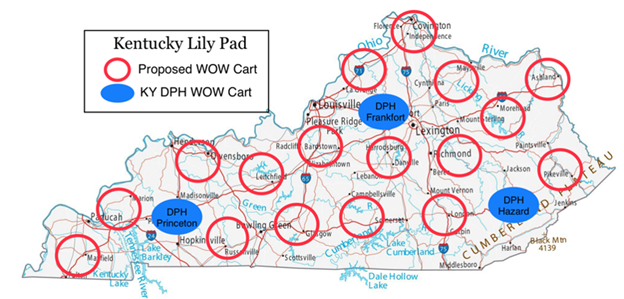WOW Cart Deployments
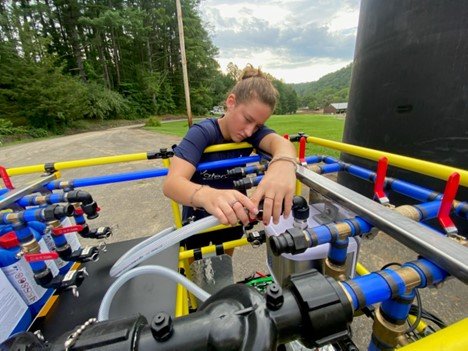
EPA's partnership with WaterStep continues to provide treated drinking water in the aftermath of multiple disasters of all types. Public-private partnerships like this one bring EPA researchers and experts in academia and industry together to help communities solve real environmental challenges.
Below are real-world applications and deployments of the Water-on-Wheels Mobile Emergency Water Treatment System (WOW Cart).
Read more about the development and capabilities of the WOW Cart.
On this page:
- Hurricane Laura Response
- Western Kentucky Tornado Response
- Western Kentucky Source Water Supply Loss
- Eastern Kentucky Flood Response
- International Deployments
- Non-Emergency Deployments
- Proposed Pre-Staging for Future Deployments
Natural Disaster Responses
Hurricane Laura Response in Louisiana
Within two days of Hurricane Laura landfall in September 2020, WaterStep, along with two other non-profit organizations, were on-site at one of the First Responder base camps on the property of a large church in Lake Charles, Louisiana.
During the Boil Water Advisory, water to be treated was supplied by a hose connected to the church and stored in the portable bladder tank prior to treatment. Treated water was pumped into an adjacent tanker truck for distribution and use. For 18 days during the boil water order, the WOW Cart treated over 100,000 gallons of water that was used for:
- 800 First Responders on–site
- Food preparation and clean-up
- 16,000 meals prepared per day for First Responders and also delivered to the community
- Laundry
- Portable Showers
- 50 gallons of bleach solution was prepared using 50 lbs. of salt for general cleaning
During the 18 days of deployment, WOW Cart training was handed off to six different response teams without any operational difficulties. A simple cost analysis highlights the cost-effectiveness of the WOW Cart as compared to only depending on bottled water:
- Estimated retail cost of the WOW Cart = $ 40,000
- 100,000 gallons of treated water = 800,000 bottles that would require 416 pallets
- Costing $182,600 PLUS transport
- Delivering 416 pallets would require 20 C-130 Flights or 16 Semi Trailers
-
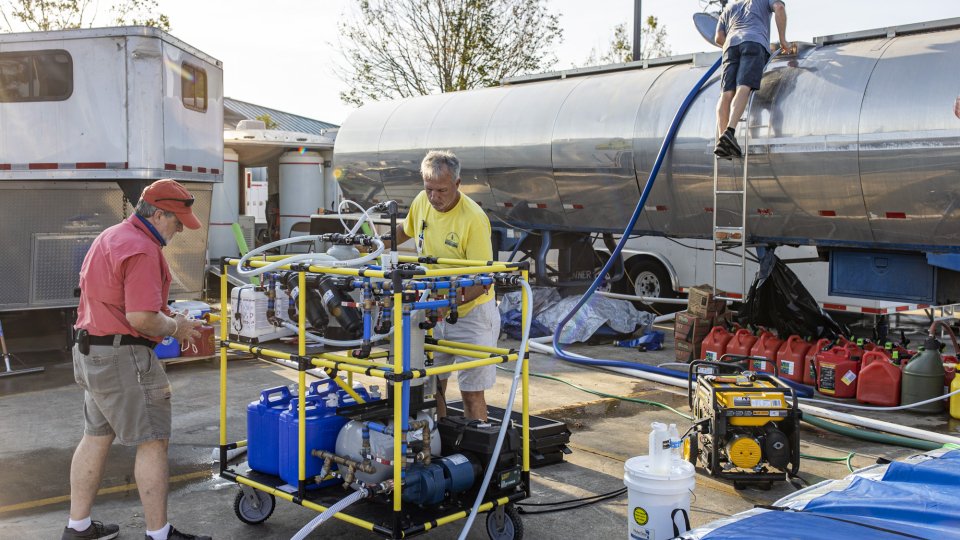
Setting up and training on the WOW Cart in Lake Charles, LA.
-
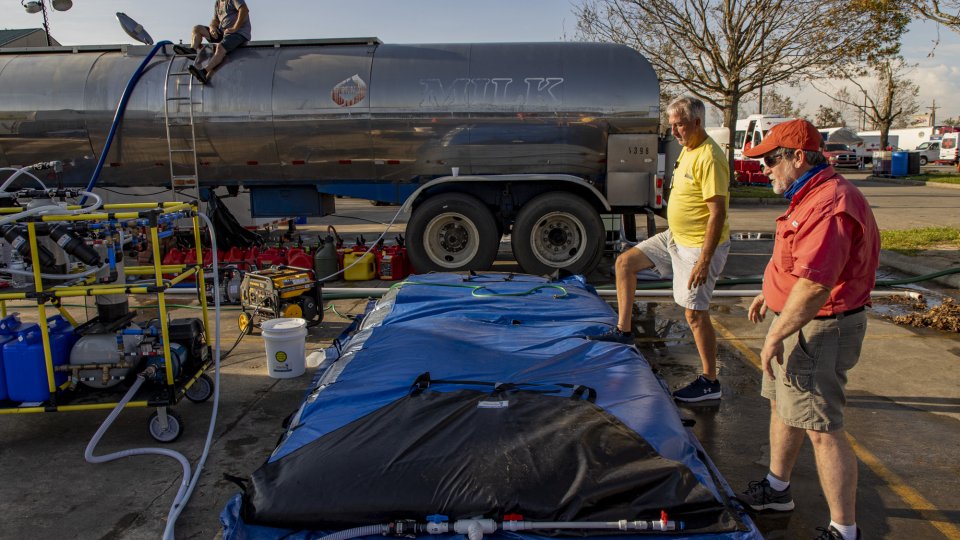
The tanker truck distributing treated water for use in food prep and showers.
-
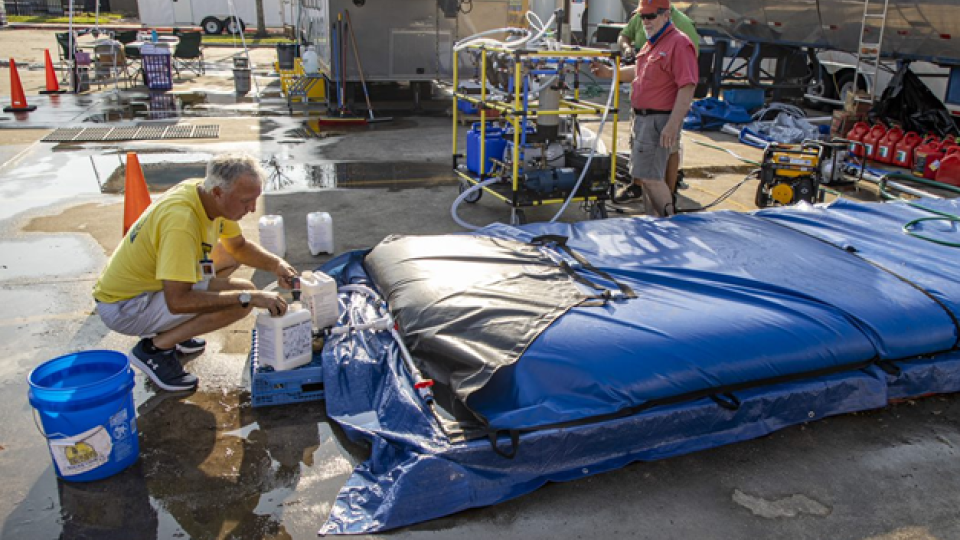
Filling jugs with water treated by the WOW Cart for distribution to the community in Lake Charles, LA.
-

Closeup shot of the M-100 Chlorine Gas Generator on the WOW Cart.
-
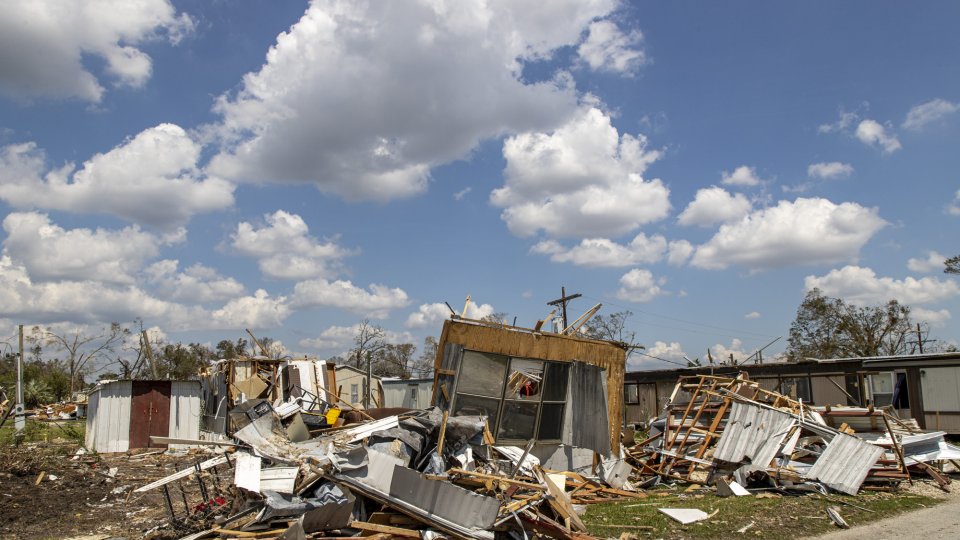
Destruction from the hurricane in Lake Charles, LA.
-

More storm damage and destruction in Lake Charles, Louisiana.
Western Kentucky Tornado Response
In December 2021, a deadly tornado devastated communities in Western Kentucky, knocking out power for days and placing thousands of customers served by the water utility under a Boil Water Advisory. Two WOW Carts deployed to the Mayfield, Kentucky, area in conjunction with the State of Kentucky Department of Public Health.
One cart was set-up at the Graves County Health Department to provide first responders, including firefighters, police, and emergency medical service workers, with showers and safe drinking water. A tanker truck filled with the potentially compromised Mayfield city water served as the source of supply for the WOW Carts. Over 10 days during the boil water order, each WOW Cart had the capacity to treat 10,000 gallons of water daily for the mobile showers and for distribution to the community in 5-gallon cans. The WOW Carts also facilitated the preparation of bleach solution for use on-site for general disinfection purposes. WaterStep staff and local responders that WaterStep trained on-site, operated the WOW Carts.
The second WOW Cart supplied clean water to a food relief organization that prepared free meals to those effected also in the Mayfield, Kentucky, area from a mobile kitchen. Again, approximately 10,000 gallons of compromised city water was treated during the deployment.
A third site utilized three mini versions of the WOW Cart to treat and store well water for emergency responders at a 4H Camp in Dawson Springs, Kentucky.
-
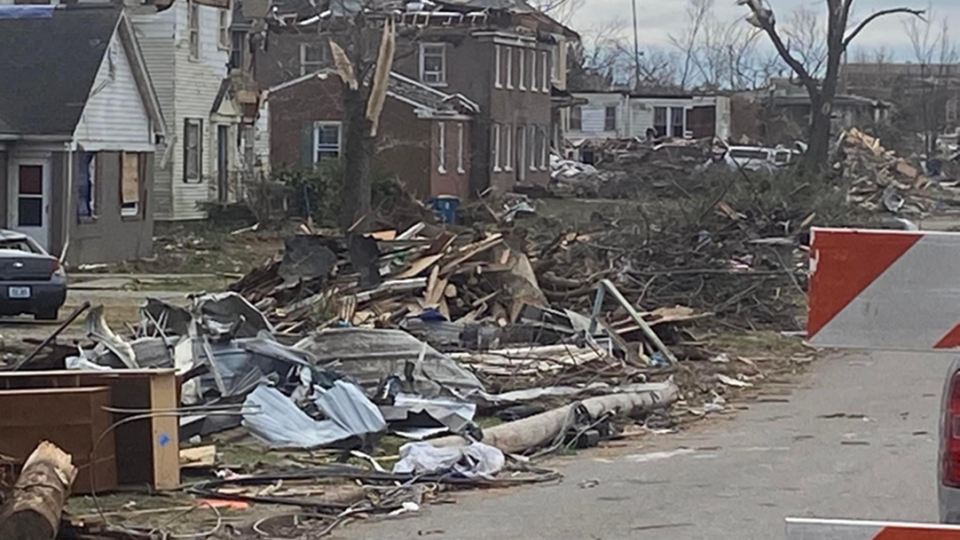
Tornado impact and destruction in Mayfield, Kentucky.
-
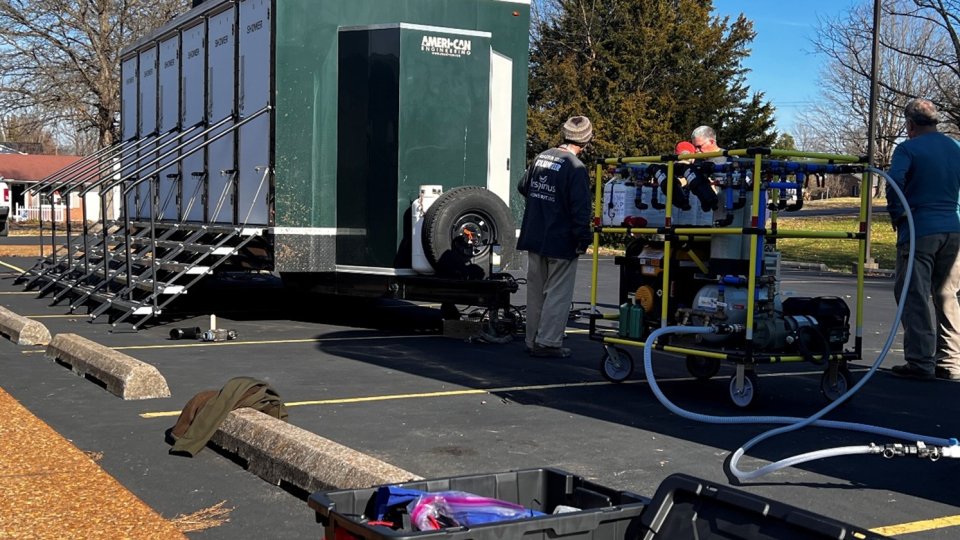
Graves County Health Department (Kentucky) WOW Cart Deployment for Mobile Showers.
-
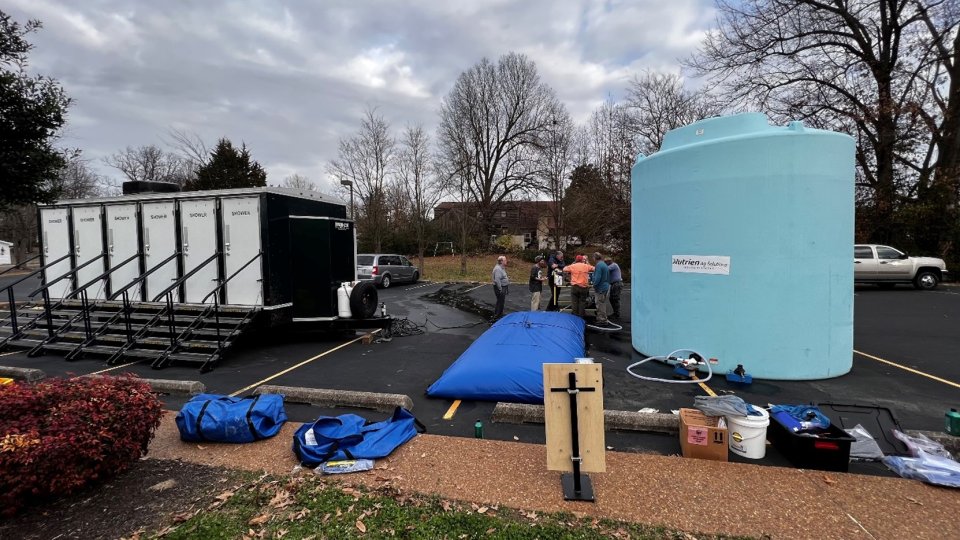
Another view of the WOW Cart water treatment deployment, showing storage/distribution to the public and the mobile shower installation.
-
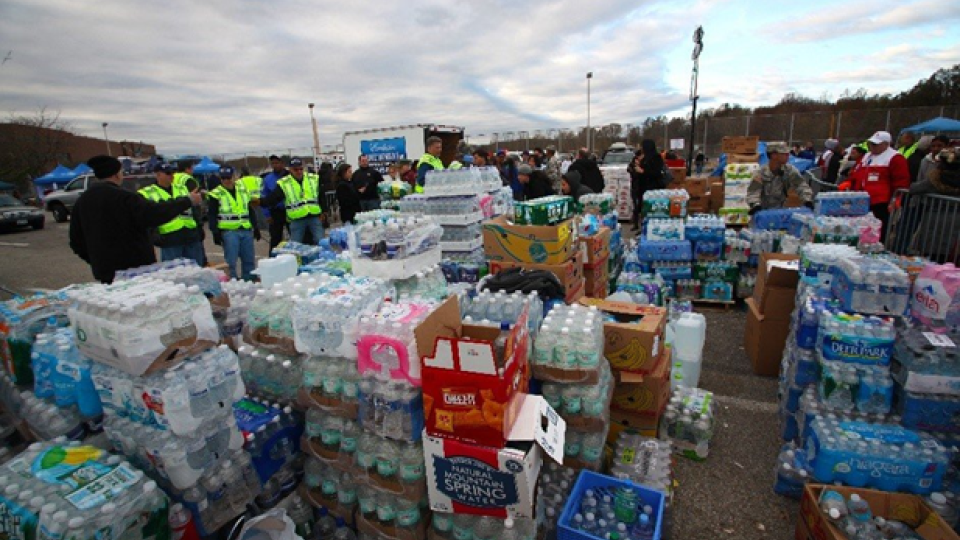
Bottled water in a staging area of Western Kentucky. All of this bottled water could be replaced by utilizing the WOW Cart, reducing plastic waste, storage space, and transport costs.
-
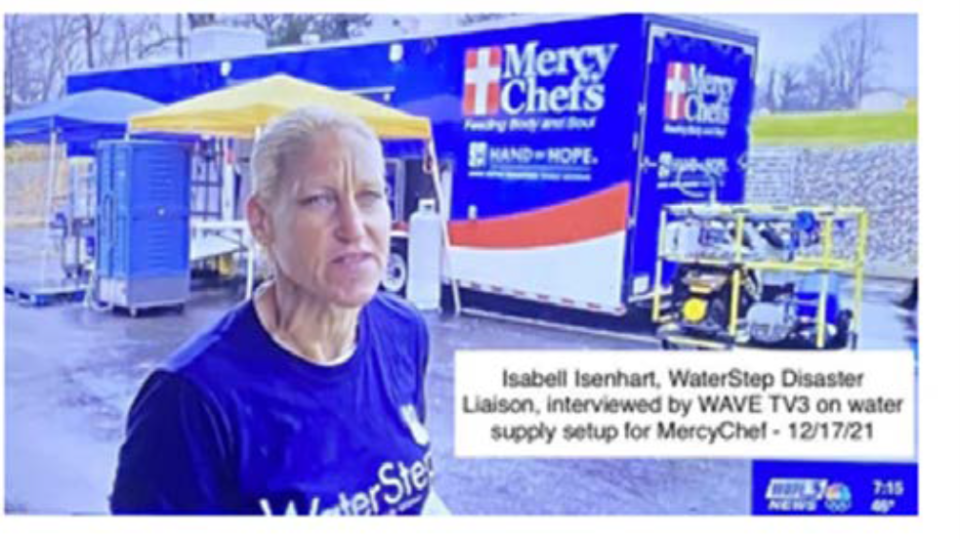
The WOW Cart provided treated water to the Mercy Chefs Mobile Kitchen in Mayfield, Kentucky. Pictured is Isabell Isenhart, a WaterStep Disaster Liaison.
-
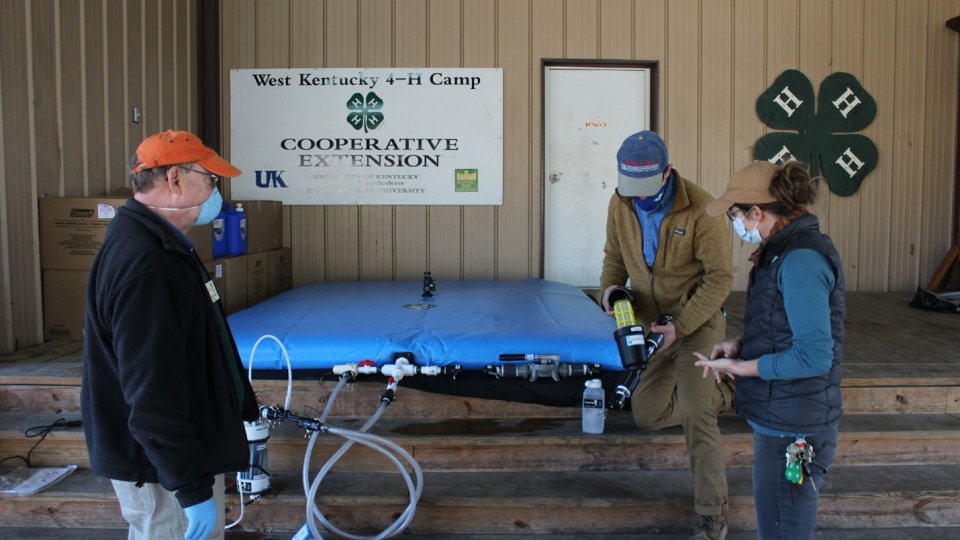
A third site utilized three mini versions of the WOW Cart to treat and store well water for emergency responders at a 4H Camp in Dawson Springs, Kentucky. The blue bag is a storage bladder to hold treated water.
-
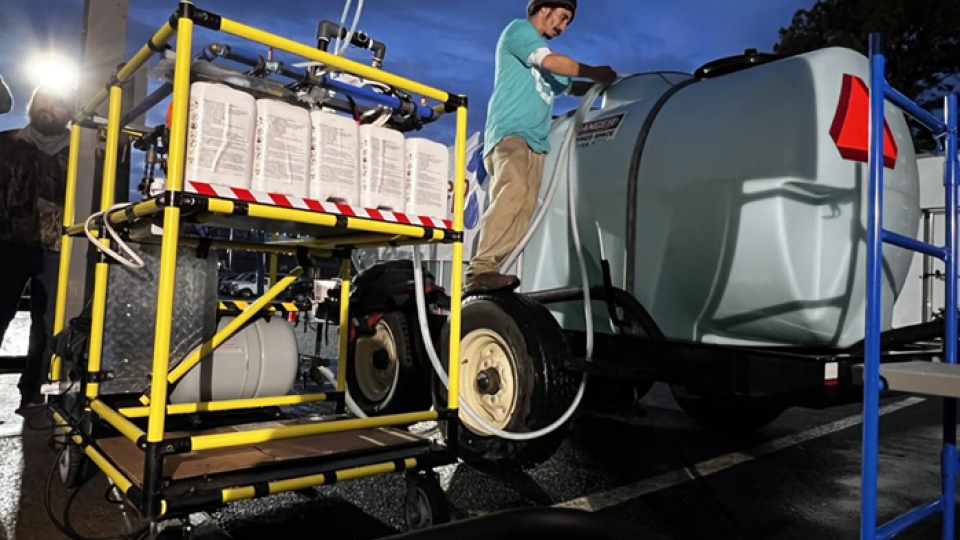
Connecting the WOW Cart for treating water tanked in from Mayfield, KY.
-
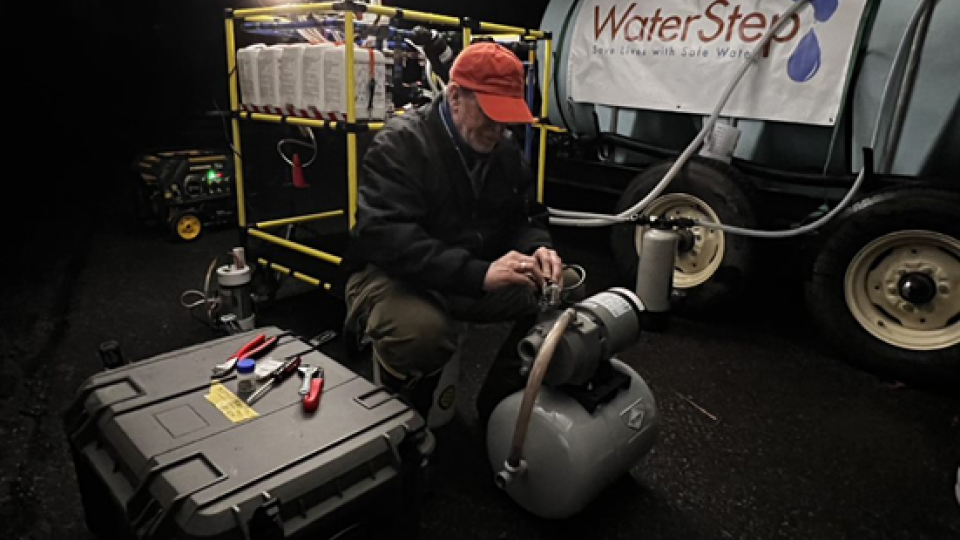
Treating water in Mayfield, KY, around the clock.
Western Kentucky Source Water Supply Loss
In June 2022, the city of Marion, Kentucky, lost access to its source water after a levee break, which reduced the reservoir of clean drinking water. The Kentucky National Guard trucked in 80,000 gallons of raw water daily to supply the water treatment plant. Two WOW carts were deployed as backup water supplies for critical care facilities and the county jail to provide water for drinking and food preparation. The Kentucky Department of Water and the Kentucky Department of Public Health oversaw water quality testing and analyses.
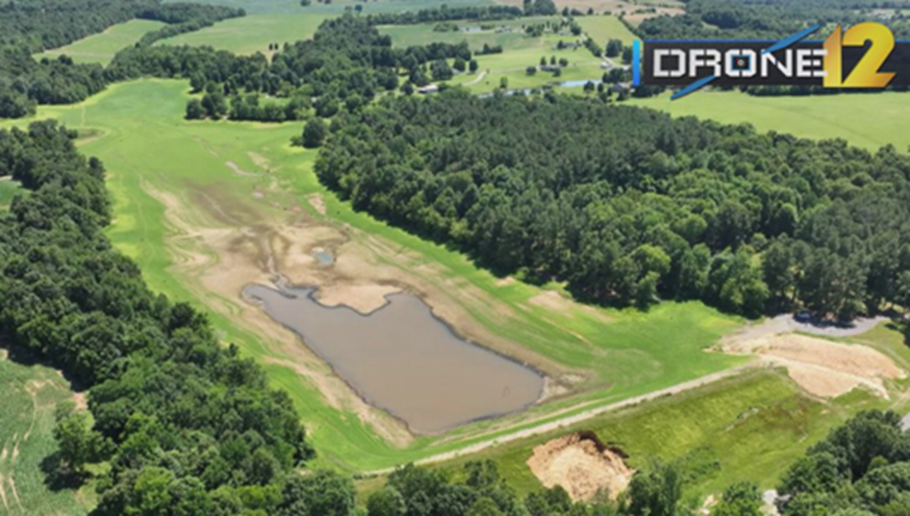
Eastern Kentucky Flood Response
Deadly flooding occurred in Eastern Kentucky in August 2022. Many in the region lost access to the public water supply. Working with state agencies, WaterStep and its partners were able to set up four WOW carts in the communities of Hazard, Buckhorn, and Mayking. The WOW Carts treated up to 10,000 gallons of water a day for food preparation and showers for emergency responders. Community members also received containers that could take home two to five gallons of water for personal use. WOW Carts were provided to:
- Perry County, HomePlace Community Center
- Perry County, Buckhorn Children’s Home
- Letcher County, Mayking Fire Department
- Breathitt County, River Caney Staging Area
Treated water was provided for ten weeks. The Kentucky Department of Water and the Kentucky Department of Public Health oversaw water quality testing and analyses.
-

Flooding in Eastern Kentucky.
-

Hooking up the WOW Cart system at the Home Place Community Center in Eastern Kentucky.
-

The WOW Cart system installed at the Home Place Community Center in Eastern Kentucky.
-
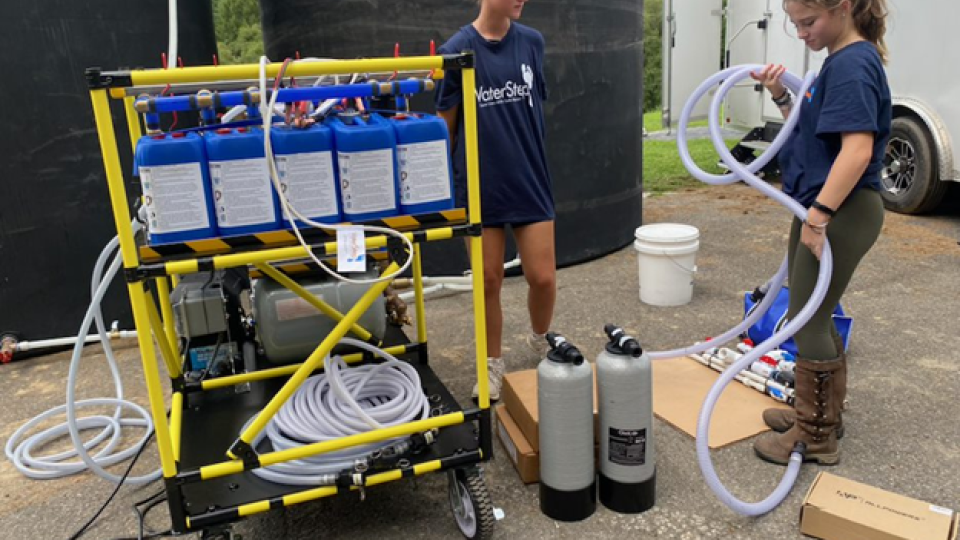
WaterStep volunteers setting up a WOW Cart in Eastern Kentucky.
-

WaterStep volunteers analyze water for chorine residual.
International Deployments
Ukraine
In 2022, a non-profit foundation delivered five WOW Carts to the Emergency Management warehouse in Kyiv, Ukraine. The WOW Carts were first delivered to Poland and then trucked directly into red zone areas on backroads into Ukraine. Prior to their delivery, the WOW Carts had to be re-wired to operate under European standards. The User Manual was also translated. WOW Cart staff held a video meeting in the Fall of 2022 to provide training to foundation staff that could be passed along to operators in Ukraine.
Turkey
Eighty (80) BleachMakers have been delivered to the Turkey pediatric hospital association following the massive and numerous earthquakes that occurred in early February 2023 in Turkey. The BleachMakers are a component of the WOW Cart that produces a chlorine bleach solution equivalent to store-bought bleach.
-

A WOW Cart ready to be shipped to Ukraine.
-

Bleachmaker units on the WOW Cart. An electric probe in each of the jugs turns the salt water in the jugs into bleach.
-
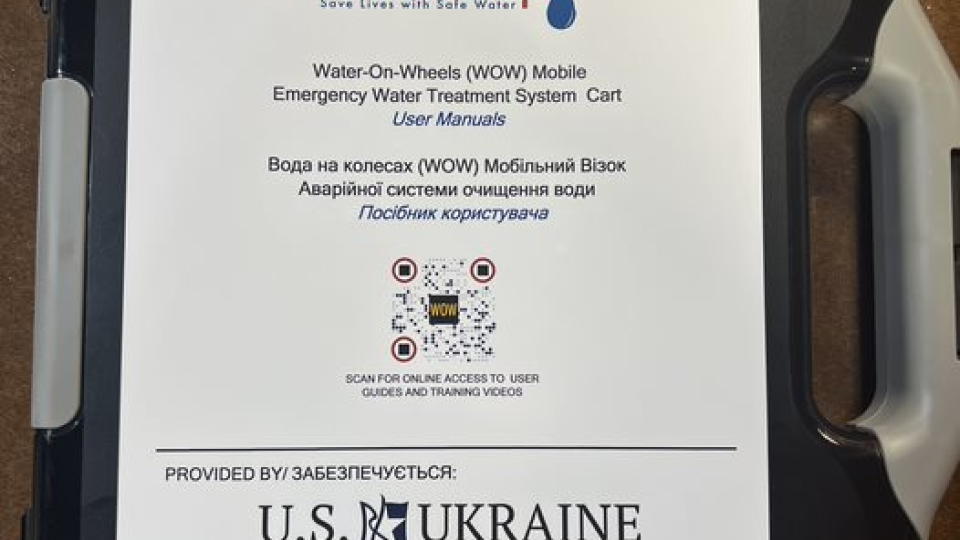
A WOW Cart user manual, translated from English to Ukranian.
Non-Emergency Deployments
Kentucky State Prison
The first two WOW Carts were delivered April 2024 to the Southeast State Correctional Complex as part of the Kentucky State Penitentiary deployment to all 14 state prisons. Two Carts will be stationed at each facility. The WOW Carts are being deployed to insure the resilience and sustainability of each facility during a natural or man-made disaster. During a community emergency response and recovery, the prisons often must provide for their own infrastructure needs. Each prison will develop a Water/Disaster Team with individuals:
- trained on the set-up and operation of the WOW Cart,
- insuring storage tanks and distribution containers are easily accessible, and
- developing emergency response procedures and best practice approaches for health when safe water is not plentiful.
Throughout the year, trainings and demonstrations will be carried out at each location as WOW Carts are delivered.
Collaborations with U.S. Army Corps of Engineers
There are tens of thousands of relief wells located along the levees and dams in the United States designed to relieve water pressure on those critical infrastructures. These wells can become encrusted with corrosion and biofilm, reducing their flow production and ability to reduce pressures, thus putting the network of dams and levees at risk for failure.
The United States Army Corps of Engineers (USACE) currently try to treat each well to clear this corrosion and biofilm. USACE typically treats the wells every 3-5 years with the goal of reducing the time between treatments. The USACE mixes bags of oxalic acid with well water in a 1,000-gallon tank and reinjects the solution into the well. The acid solution is left in the well overnight and then the well is flushed with air to remove and flush out the corrosion and biofilm. The tank, pumps, and acid are transported and operated from a trailer.
The USACE is investigating the WOW Cart, in collaboration with EPA and WaterStep, as a replacement for the oxalic acid flushing to improve the rehabilitation of the wells, increase the number of wells that can be treated in a day, reduce the cost, and improve the safety of the well rehabilitation procedures. WOW Carts have been deployed to two treatment sites in Mississippi in August 2022 and March 2023.
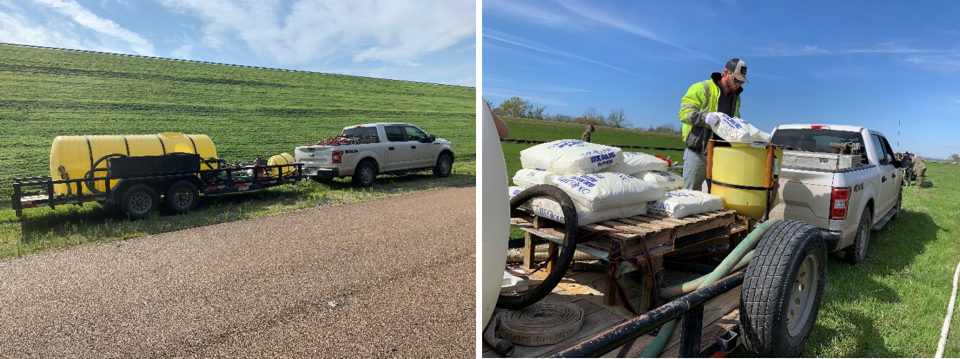
Granada Lake, Mississippi – August 2022
Granada Lake is located northeast of the City of Granada on the Yalobusha River, which is a tributary of the Mississippi River. Over 130,000 homes were lost and 700,000 people displaced during the disastrous Mississippi River flood in the winter of 1926-1927. The disastrous Flood of 1927 served as the catalyst for the construction of four strategically located reservoirs located in North Mississippi. The earthen-filled Granada Lake Dam was completed in 1954 and stands 80 feet above the streambed. There are 120 Relief Wells in the toe below the dam that is 2.6 miles long.
The Granada Lake Dam Relief Wells flow continuously, which requires the treatment solutions to be pumped into the wells, then capped to treat the well casings overnight before air sparging. USACE is evaluating the current oxalic acid treatment against the WOW Cart treatment train, which includes filtration and chlorine gas injection. Another treatment alternative is directly injecting the chlorine bleach solution only (generated by the BleachMaker, a component of the WOW Cart that produces a chlorine bleach solution), that can be produced in parallel to the water treatment train from the WOW Cart.
-
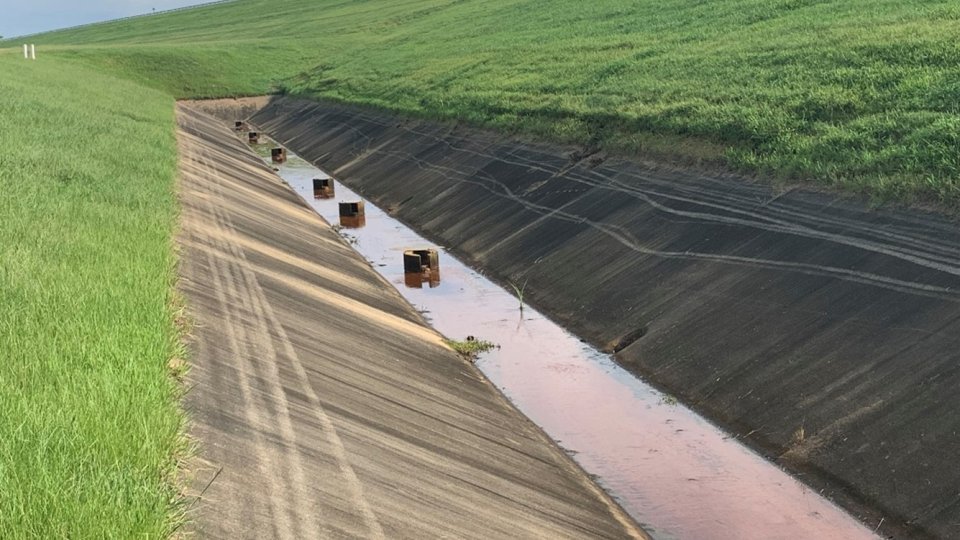
Some of the relief wells at the Granada Lake Dam.
-
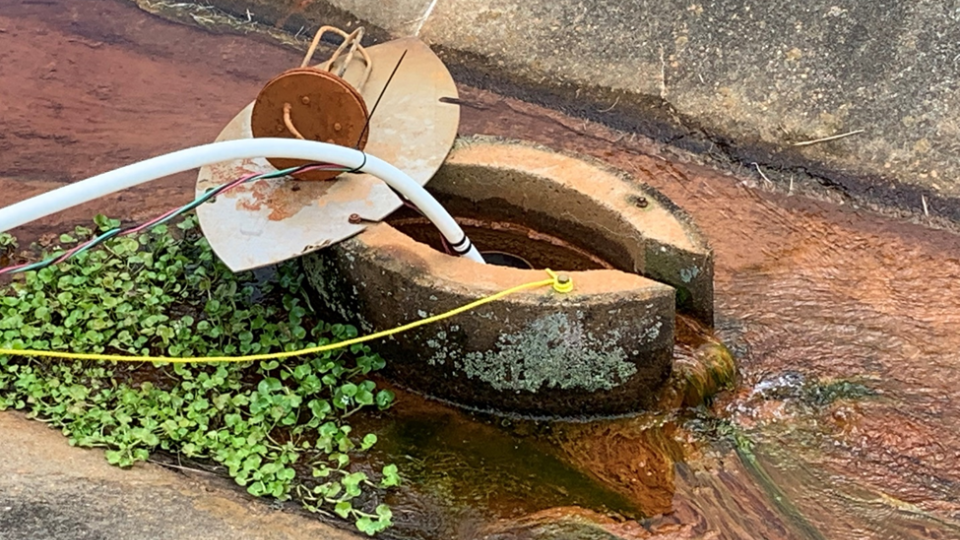
Treated water produced by the WOW Cart is pumped into a Granada Lake Dam Relief Well.
-

Air sparging of a Granada Lake Dam relief well.
-

Making bleach at the Granada Lake Dam.
Vicksburg, Mississippi, Levee Relief Wells – March 2023
The levee Relief Wells near Vicksburg do not flow continuously and are much deeper and below the ground surface than those at Granada Lake Dam.
Treatment of these Relief Wells was similar to the Granada Dam Relief Wells, except the WOW Cart bleach solution was also combined with the WOW Cart water treatment train to increase the free chlorine residual being put into contact with the well casing. The USACE oxalic acid mixing tank and pumps, rather than the WOW Cart bladder tank, were also used to streamline the operation. The goal was to treat 20 wells. Combining the WOW Cart treatment utilizing the USACE trailer enabled 32 wells to be rehabilitated. The Operators also found the WOW Cart operation to be easier and safer than having to physically handle, open, and mix the multiple bags of oxalic acid. Eliminating the need for the oxalic acid also reduces the overall cost. Evaluation of the performance of the various treatment combinations is underway, including water quality and returning the necessary flows to the wells compared to their original design.
Additional Impacts from the Vicksburg Deployment
Following the previous studies at Grenada Lake and the Vicksburg levee Relief Wells, the USACE has decided to integrate the WOW Cart into their Relief Well Rehabilitation Standard Operating Procedure replacing the oxalic acid with the WOW Cart. Two trailers are being built. One will be operated by the USACE Mississippi Valley District located in Vicksburg, Mississippi. The second trailer and system will be developed by the USACE Engineer Research and Development Center (ERDC) to be deployed at another USACE District (TBD). The addition of chlorine infused water and bleach treatment for field design protocols helps improve the relief well risk management to dams and levees, which in turn reduces the cost, time, and manpower required to control relief well biofouling and encrustation. Establishing an integrated trailer for treatment will improve the operational process.
The new trailer was evaluated in February 2024 along the Mississippi River approximately 30 miles north of Vicksburg, MS at the Magna Vista Levee. Thirty relief wells were decontaminated in about one day. Typically, no more than 20 are treated under the previous oxalic acid system. Following air lifting of the wells, various concentrations of free chlorine and well-volumes were pumped into the wells to try to determine the optimal volume and dosing to rehabilitate the wells. Some wells were further treated with an experimental UV light that was lowered into the well to address microbial contamination. Follow-up well flow and microbial testing will be conducted to optimize the decontamination protocol. Once finalized, it is expected that 20-30 wells per day will be able to be rehabilitated, thus reducing costs for the five-year treatment cycle for their relief wells.
-
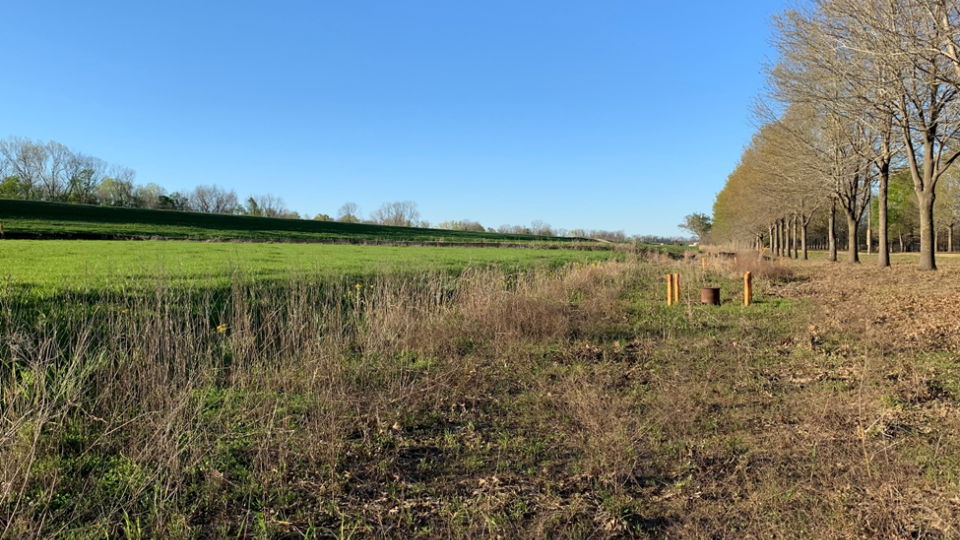
Mississippi River Levee Relief Wells near Vicksburg, Mississippi.
-
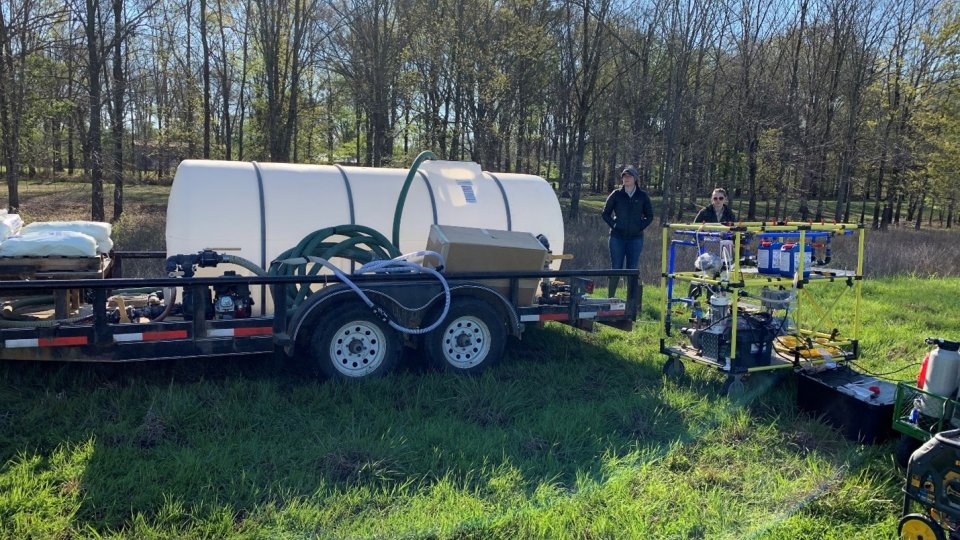
WOW Cart combined with the USACE Trailer.
-

Making bleach at the levee near Vicksburg, with the combined operation of the USACE trailer and WOW Cart. The blue jugs on the table each contain an electric probe that turn the salt water in the jugs into bleach.
Future USACE Deployments
In 2023, the WOW Cart was modified to comply with ruggedized military specifications.
This version of the WOW Cart is being called the Deployable Resilient Installation water purification System (DRIPS). Following a demonstration and training at Ft. Leonard Wood, Missouri, in June 2023, the DRIPS is deployed to the Letterkenny, Pennsylvania Army Depot funded through the USACE Installation Technology Transfer Program.
Additional deployments are planned for operation in conjunction with the NATO International Cooperative Engagement Program for Polar Research (ICE-PPR) in arctic environments with proposed testing and evaluation in various temporal regions with the National Defense Center for Energy and Environment. The first evaluation is planned for February 2024 at Ft. Wainwright in Fairbanks, Alaska.
-
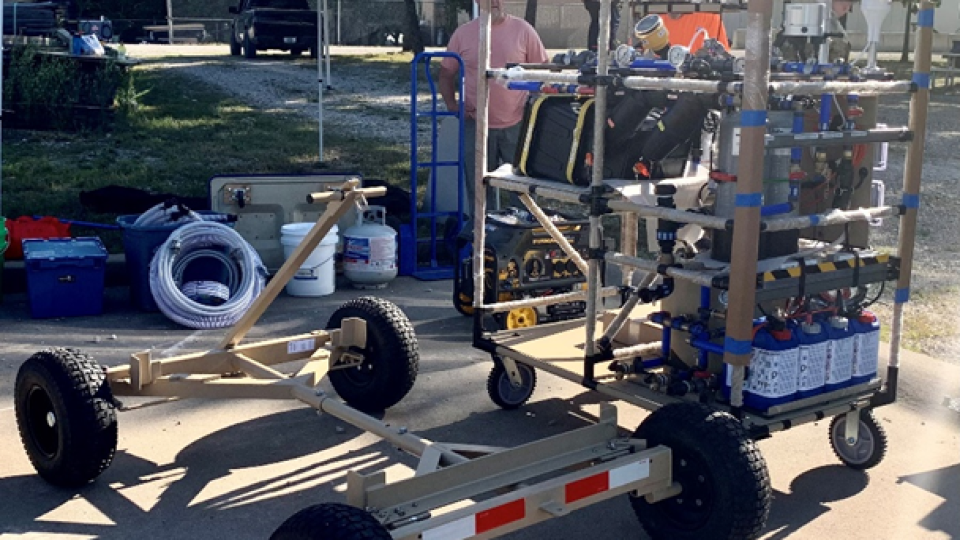
DRIPS Cart at Ft. Leonard Wood, Missouri with Personal Trailer (military version).
-
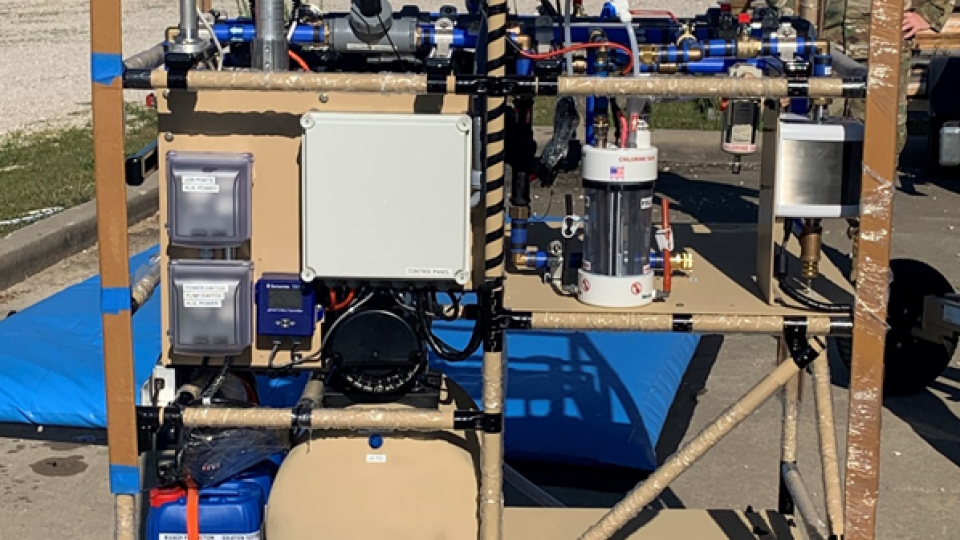
Close-up of the ruggedized DRIPS Cart used at Ft. Leonard Wood, Missouri.
-
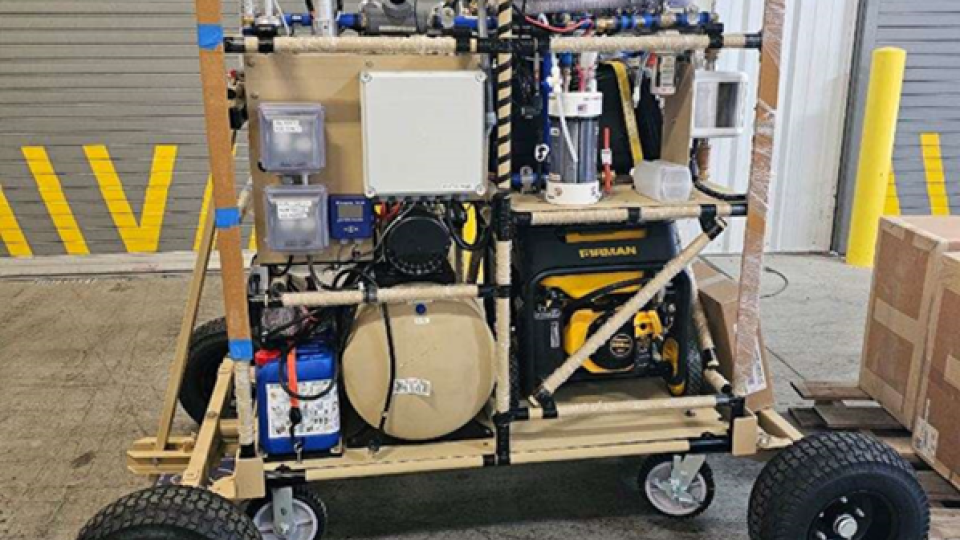
Close-up of the DRIPS Cart mounted on a personal trailer.
Ft. Wainwright U.S. Army and Northern Command Demonstration, Fairbanks, Alaska
In March 2024, DRIPS was showcased inside a Northern Command prototyped Microgrid called the Modula S structure. The demonstration aimed to allow for integration of potable water production capability in an Arctic region to test processes, procedures, systems, strengthen relationships with mission partners, assess training readiness, and conduct experiments aligning with the U.S. Army and U.S. Northern Command's science and technology strategies in the Arctic.
Arctic forces are at risk of mission failure when purifying, storing, and distributing liquid water in the Arctic at high altitudes, seasonally changing and challenging terrain, and temperatures down to -65ο F, thus preventing sustainable support for forces in this environment.
The ruggedized Arctic DRIPS is envisioned to be a component in the full-scale logistic support function in extreme cold environments. It functioned as expected, despite having traveled and being stored in sub-freezing temperatures (-11ο F). In extreme cold climates, maintaining sealed thermal barriers, reliable power sources, and protection from the elements are imperative for mission assurance and maintaining fuel and water in its liquid state. The R-60 Ultra efficient Building Envelope is capable of sustaining at exterior temperatures of -65ο F to 127ο F. The Modula S protective exoskeleton and independent power grid is designed for deployment in arctic and desert environments. The DRIPS is well-suited for this application given its mobility and ability to operate via multiple energy sources with low consumable utilization. The Modula S system's passive building design principles ensured optimal performance of the DRIPS in the harsh Arctic conditions, with a constant operating temperature of 60ο F despite exterior temperatures dropping to -14ο F that week.
Partners included the U.S. Army 953rd Theater Petroleum Center, the North American Aerospace Defense Command and the International Cooperative Engagement Program for Polar Research, in coordination with the Office of Naval Research and the Polar Water and Wastewater working group initiatives. Locally, the Alaska National Guard, Tribes, and law enforcement correctional office were participants.
Future Research Demonstration Activities:
- Ft. Barfoot, VA (June 2024) - Quartermaster Liquid Logistics Exercise will provide drinking water to U.S. Soldiers in the field.
- Camp Shelby Joint Forces Training Center, MS (Summer 2024) - USACE's Gray Water Treatment system integration with DRIPS, which will be known as the Graywater Logistics Assured Defense Installation Advance Technology for Operational Resilience (GLADIATOR) system. Proposed evaluation and demonstration in Fall 2024 - 2025.
Proposed Pre-Staging for Future Deployments
Lily Pad Network Concept
Within a drinking water distribution system, a WOW Cart could be deployed in an affected portion of the system or at strategically designated locations such as fire departments, police stations, community centers, hospitals, nursing homes, or jails across a community or state. Multiple locations across an area could be likened to that of lily pads spread across the surface of a pond.
EPA and WaterStep have proposed a Lily Pad Network concept so that:
- Emergency workers and equipment can respond independently or gather together to meet a larger need
- Public health departments, fire stations, churches, rural water associations, corporations, and others all invest in leadership and develop strategies for local organizations to support the network
- Funding, regular training, and growing more certified operators to expand capacity and create a foundation for resiliency.
A generic proposal for pre-approved emergency use by a State might include the following applicable components:
- Agreement by applicant that use is limited to State stipulations such as:
- Declaration of emergency by state/local official
- Up to 30-day use, with State approval for time extensions
- Designated locations for Decentralized Use
- Specification of allowed source water (e.g. water from public water supply only (treated but under boil water advisory)
- Agreement to inspection by State field personnel
- Agreement that system is operated by State licensed operator
- Details about locations and logistics managed by a 3rd party such as under a mutual aid Water/Wastewater Agency Response Network (WARN) agreement
To support disaster response efforts, two Disaster Response Command Center Trailers are being customized for regional deployment by WaterStep. These Mobile Command Center trailers will carry all field supplies needed to support regional Lily Pad Network Disaster Response teams. These trailers will be deployed by WaterStep teams to support communities in crisis while also serving as an additional distribution point to support comprehensive response efforts in disasters, including provision of safe water and sanitation for medical, shower, laundry, and food trailers.
